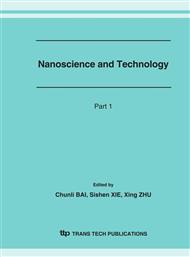p.1003
p.1007
p.1011
p.1017
p.1021
p.1025
p.1029
p.1033
p.1037
Atomistic Study of the Strain- and Size-Dependence of Poisson’s Ratio of Single-Walled Carbon Nanotubes
Abstract:
Three armchair single-walled carbon nanotubes (SWCNTs) (7, 7), (12, 12), (17, 17) and three zigzag SWCNTs (12, 0), (16, 0), (20, 0) are investigated in this paper, using the molecular dynamic (MD) method with the second-generation Tersoff-Brenner (TB) potential. The Poisson’s ratio of these nanotubes under tensile and compressive loading is obtained. The effect of the strain and size on the Poisson’s ratio of nanotubes is analyzed systematically, from the viewpoints of the structure and the averaged atomic potential energy of nanotubes. The results show that the Poisson’s ratio of nanotubes decreases as the strain increases. The Poisson’s ratios of nanotubes of larger chiral angle decrease more quickly. For nanotubes of the same chiral angle, the larger the diameters of nanotubes are, the larger their Poisson’s ratios become. Moreover, the Poisson’s ratios of nanotubes of larger diameter are more approaching.
Info:
Periodical:
Pages:
1021-1024
Citation:
Online since:
March 2007
Authors:
Price:
Сopyright:
© 2007 Trans Tech Publications Ltd. All Rights Reserved
Share:
Citation:


